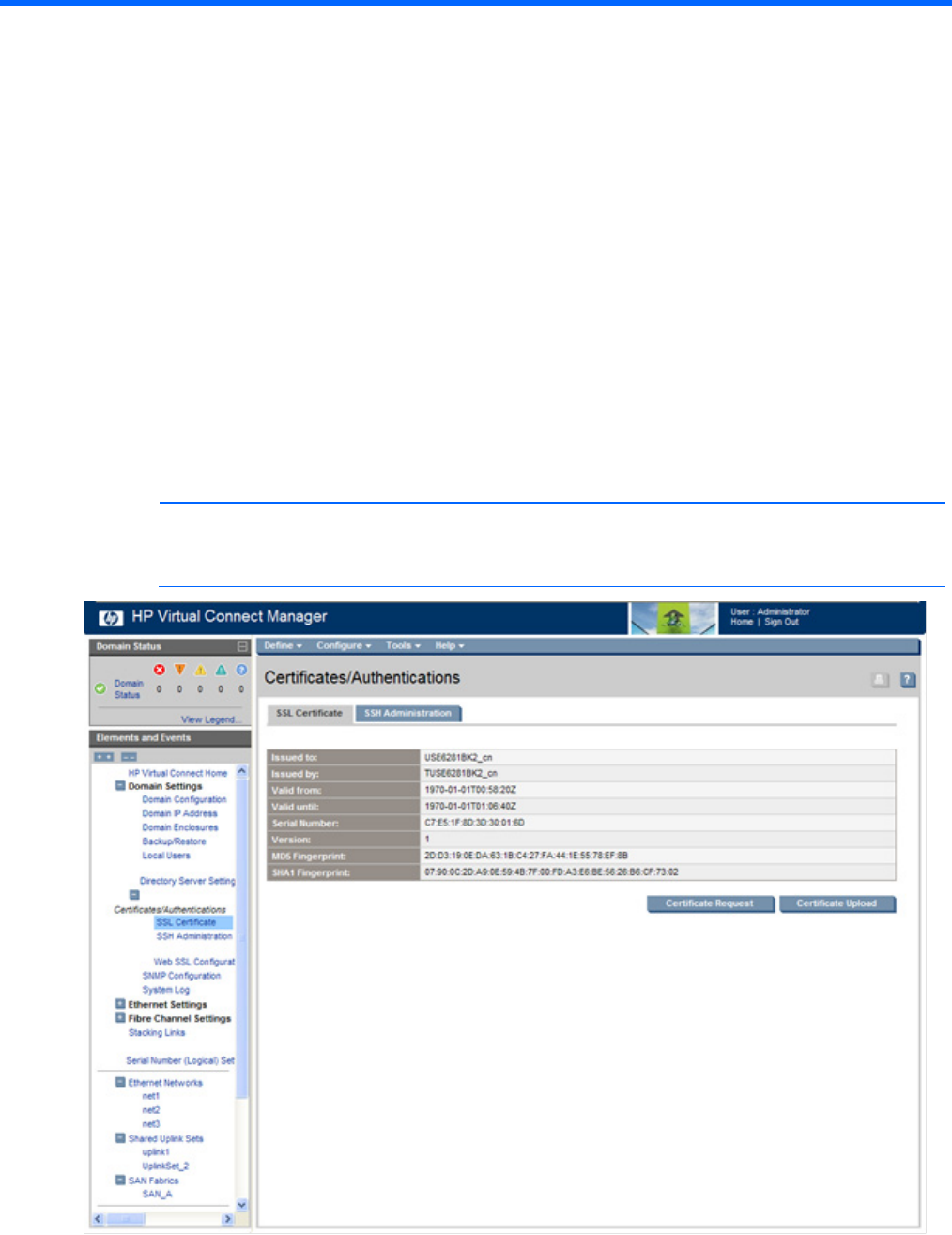Manual
Table Of Contents
- HP Virtual Connect for c-Class BladeSystemVersion 3.01User Guide
- Notice
- Contents
- Introduction
- Overview
- HP Virtual Connect Manager
- Domain management
- Domain overview
- Firmware updates
- Domain Settings (Domain Configuration) screen
- Domain Settings (Domain IP Address) screen
- Domain Settings (Domain Enclosures) screen
- Domain Settings (Backup/Restore) screen
- Domain Settings (Local Users) screen
- Directory Settings (Directory Server) screen
- Directory Settings (Directory Groups) screen
- Directory Settings (Directory Certificate) screen
- Test LDAP authentication
- SNMP overview
- System Log screen
- System Log Configuration
- Network management
- Networks overview
- Define Ethernet Network screen
- Edit Ethernet Network screen
- Ethernet Networks (External Connections) screen
- Ethernet Networks (Server Connections) screen
- Ethernet Settings (MAC Addresses) screen
- Ethernet Settings (Port Monitoring) screen
- Ethernet Settings (Advanced Settings) screen
- Stacking Links screen
- Shared uplink sets and VLAN tagging
- Define Shared Uplink Set screen
- Shared Uplink Sets (External Connections) screen
- Shared Uplink Sets (Associated Networks) screen
- Storage management
- Server management
- Certificate Administration
- Hardware information screens
- Enclosure Information screen
- Enclosure Status screen
- Interconnect Bays Status and Summary screen
- Causes for INCOMPATIBLE status
- Interconnect Bay Summary screen (Ethernet module)
- Interconnect Bay Summary screen (VC-FC Module)
- Module removal and replacement
- Interconnect Bay Overall Status icon definitions
- Interconnect Bay OA Reported Status icon definitions
- Interconnect Bay VC Status icon definitions
- Interconnect Bay OA Communication Status icon definitions
- Server Bays Summary screen
- Server Bay Status screen
- Acronyms and abbreviations
- Glossary
- Index

Certificate Administration 117
Certificate Administration
Certificates/Authentications (SSL Certificate) screen
This page displays the detailed information of the Secure Socket Layer (SSL) Certificate currently in use by
the Virtual Connect Manager. An SSL certificate is used to certify the identity of the Virtual Connect
Manager and is required by the underlying HTTP server to establish a secure (encrypted) communications
channel with the client Web browser.
On initial start up, the Virtual Connect Manager generates a default self-signed SSL Certificate valid for
10 years, and the certificate is issued to the DNS name of the Virtual Connect Ethernet module (the
dynamic DNS name from the Default Networks Setting label). Because this default certificate is self-
signed, the "issued by" field is also set to the same DNS name.
If the Virtual Connect Manager is configured with a Virtual Connect domain IP address, then future
certificate requests generated are issued to this domain IP address. For information on generating a new
certificate, see "Certificate Request (on page 118)."
NOTE: When using a domain IP address, Certificate Administration allows a common
certificate to be utilized between a Primary in Bay 1 and a subsequent Primary in Bay 2 after
a failover.










